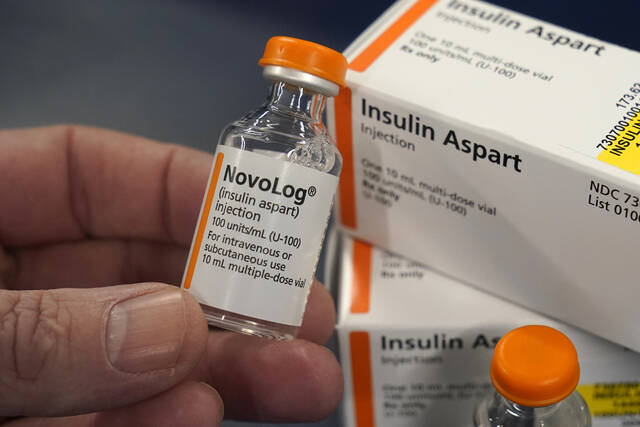Lori Falce: The crippling cost of insulin
Insulin is not just a drug.
It’s a hormone that is produced in the pancreas. It is part of how the body controls blood sugar. When you talk about it like that, it doesn’t seem like that big a deal.
But it is — because the sugar in your blood is a byproduct of every bite you take. If you can’t control your blood sugar, you can’t eat. If you can’t eat, eventually you die. If you eat and don’t have insulin, eventually, yes, you still die.
I didn’t understand this completely before I married a diabetic. Actually, I married a family of diabetics. My husband was diabetic the way he was Catholic and Italian: genetically and going back generations on both sides. To my knowledge, I am the first person to marry a Falce and not subsequently become diabetic.
It did not take long to grasp the seriousness. The cost of insulin was crippling and would lead my husband to scrimp on what he took — sometimes by just a few units and sometimes by skipping a dose entirely. This would end up having consequences.
When my son was born, we hurried out to the hospital an hour away with my bag but forgot my husband’s meds. After more than 24 hours without insulin, he was incoherent and shaky. He was admitted to intensive care with diabetic ketoacidosis. I was released with a newborn after two days; my husband was in for a week.
There were multiple hospitalizations for pancreatitis, for related heart conditions, for kidney problems. And our story wasn’t unique. The Centers for Disease Control and Prevention puts the number of diabetics in the U.S. at 37.3 million — about one in 10 adults, half of whom are undiagnosed. Another 96 million have prediabetes. That means that 40% of Americans either have diabetes or are in danger of developing it.
In 2019, diabetes was listed as the primary cause of death on 87,647 death certificates but noted as a contributing cause on almost 200,000 more. And that was before covid-19.
Diabetes is responsible for well over $300 billion in medical costs. It contributes to people being out of work and on disability. That can affect a whole family’s ability to earn money and support their household. It literally leads to choices about paying rent, paying the electric bill or paying for insulin.
And so I was happy when the $35-per-month insulin provision was included in the Inflation Reduction Act for Medicare patients. I was just as crushed when a provision to have that same rule apply to private insurance companies was abandoned because of parliamentary rules.
Affordable insulin is a medical issue, but it is more. It is a humanitarian issue. It is a social issue. And it cannot be underestimated as a cost-saving issue for the nation at large. It would save hundreds or thousands of dollars every month for families. It would help pay mortgages and utilities and grocery stores. It would reduce the amount of money spent on critical care and allow more to be spent on prevention.
I don’t know how much longer my husband could have lived if he hadn’t rationed his insulin for years, depriving his body of an absolutely vital hormone. I do know he isn’t the only person who died sooner than he should have because of it.
Making insulin affordable — not free, just accessible —could change that.
Lori Falce is the Tribune-Review community engagement editor and an opinion columnist. For more than 30 years, she has covered Pennsylvania politics, Penn State, crime and communities. She joined the Trib in 2018. She can be reached at lfalce@triblive.com.
Remove the ads from your TribLIVE reading experience but still support the journalists who create the content with TribLIVE Ad-Free.

